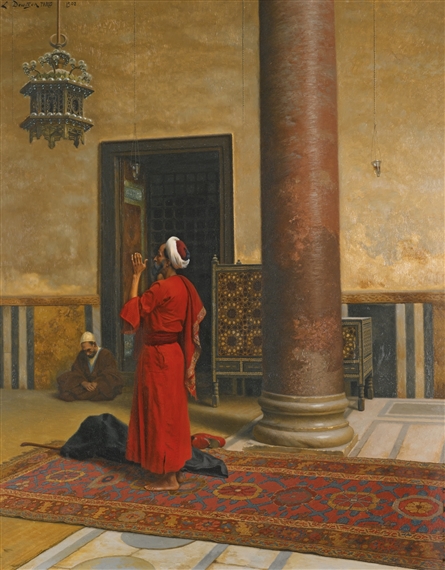
Ludwig Deutsch
MORNING PRAYERS
Dimensions: 25.59 X 20.28 in (65 X 51.5 cm)
Medium: oil on panel
Creation Date: 1902
Signed
Ludwig Deutsch (Vienna, 1855 - Paris, 1935) was an Austrian painter who settled in Paris. He studied at the Vienna Academy of Fine Arts 1872-1875, then, in 1878, moved to Paris where he became strongly associated with Orientalism. He was on good terms with another Austrian Orientalist in Paris, Rudolf Ernst. More
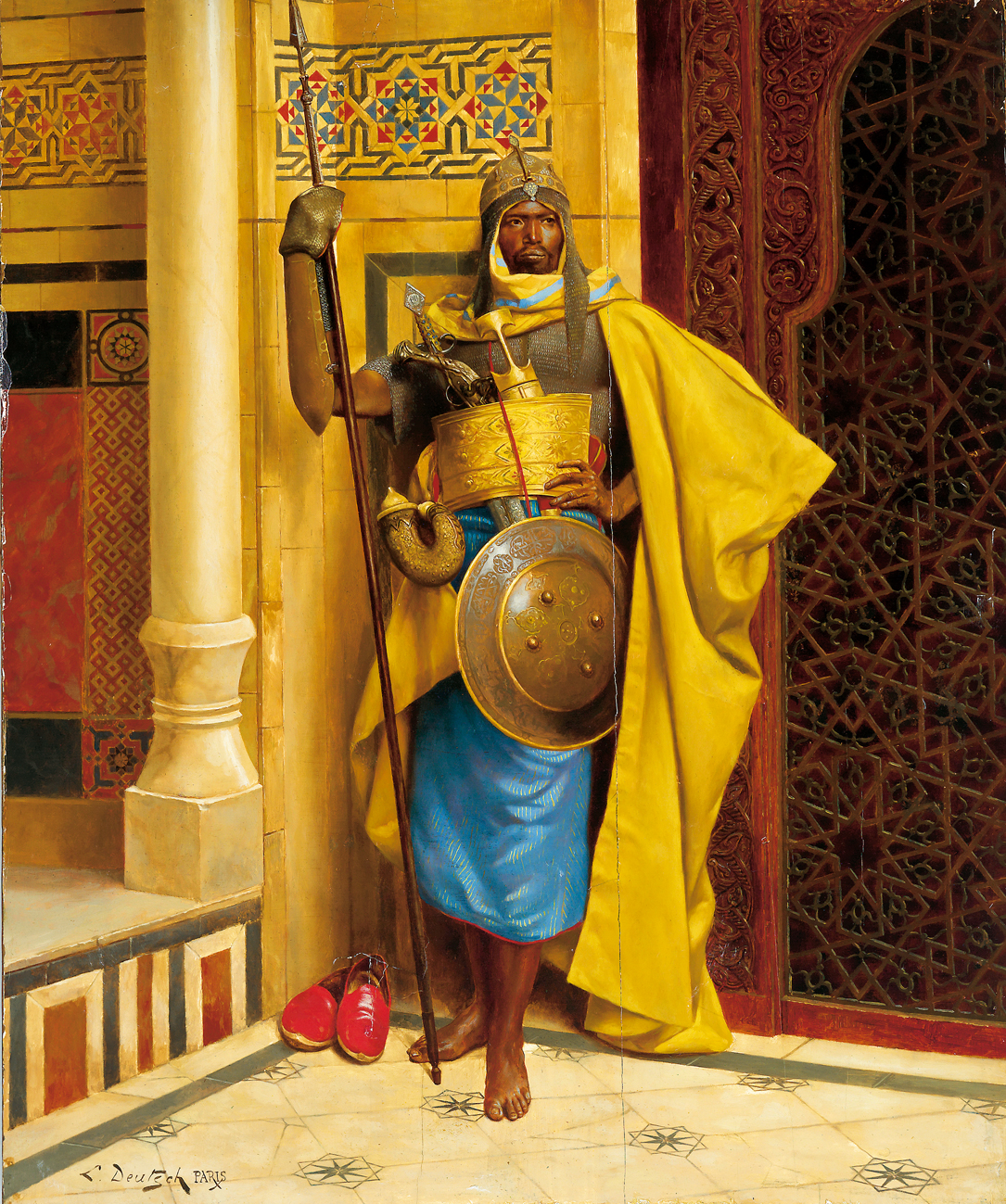
Ludwig Deutsch (1855–1935)
The Nubian Palace Guard
Oil on canvas
 Ludwig Deutsch (1855-1935)
Ludwig Deutsch (1855-1935)
A Nubian Guard, c. 1895
Oil on panel
50.5 x 33 cm
(19.88" x 12.99")

Ludwig Deutsch (1855–1935)
The Sahleb Vendor, Cairo, c. 1886
Oil on canvas

Ludwig Deutsch (1855–1935)
The Smoker, Cairo, c. 1903
Oil on canvas

Ludwig Deutsch, (1855 - 1935)
At Prayer
Oil on Panel, Signed and dated 1923
Image size: 22 x 17 1/2 inches (56 x 44.5cm)
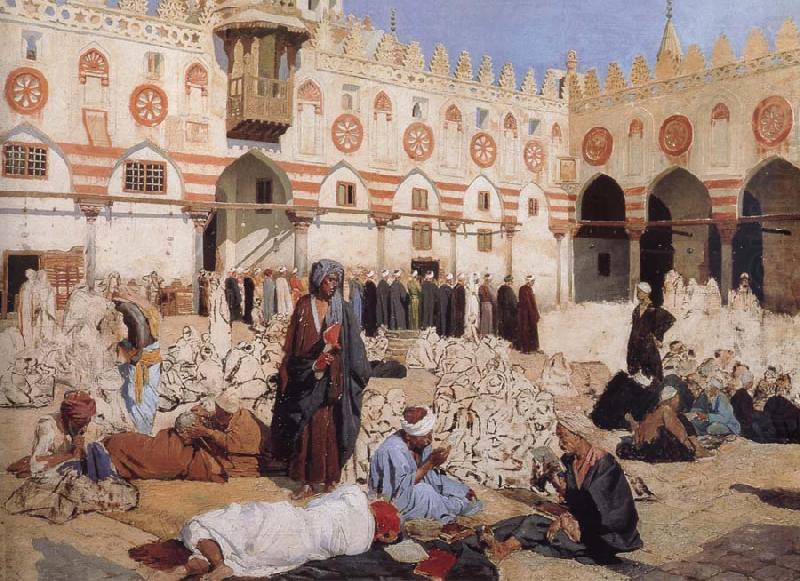
Ludwig Deutsch, (1855 - 1935)
El Azhar Arab University of Cairo, c. 1890
Oil on canvas
73.5x99.5cm
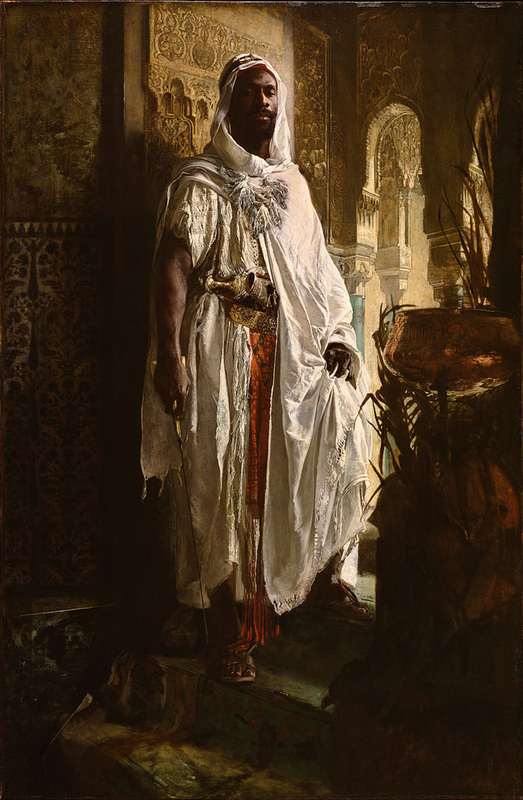
Eduard Charlemont, Austrian, 1848 - 1906
The Moorish Chief, c. 1878
Oil on panel
59 1/8 x 38 1/2 inches (150.2 x 97.8 cm)
Philadelphia Museum of Art
Standing in front of an arch that closely resembles the architecture of the Alhambra in Spain, the Moorish chief exudes power and mystery. This painting was probably shown at the Paris Salon exhibition of 1878 with the title Le Gardien du serail (The Harem Guard). More
After graduating from the Academy of Fine Arts Vienna, Charlemont traveled to many countries in central Europe and finally settled in Paris, where he lived for the next thirty years. In Paris, several times he won the first prize of the Paris Salon, an annual exhibition held by the French Academy of Fine Arts (French: Académie des Beaux-Arts).[1] The most famous work of Charlemont is The Guardian of the Seraglio, widely known as The Moorish Chief, depicting a Moorish swordsman guarding a seraglio (part of a typical wealthy Arabic villa, where women stayed when strangers entered the house). In 1899 he won the gold medal at the Exposition Universelle, a World's Fair held in Paris. Charlemont was also known for his murals. He painted three of the murals of the Burgtheater (the Austrian National Theatre in Vienna and one of the most important German language theatres in the world) totaling a length of about 55 meters. He died in Vienna in 1906.
Today, reproductions of his painting The Moorish Chief are the best-selling items in the museum store of the Philadelphia Museum of Art. More
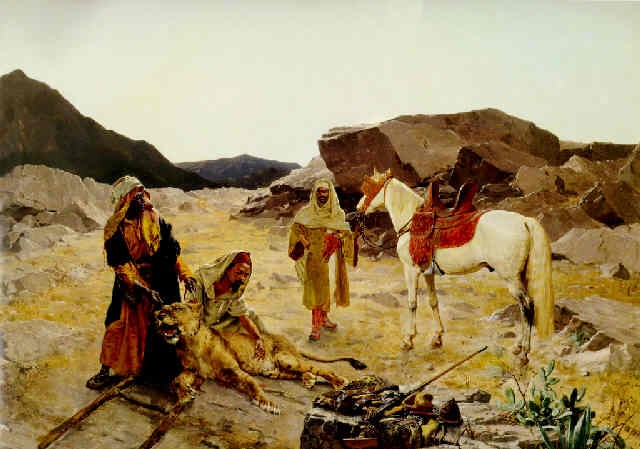
Rudolf Ernst (Austrian, 1854–1932)
The captured lion
Oil on Panel
71.1 x 90.2 cm. (28 x 35.5 in.)

Rudolf Ernst (Austrian, 1854–1932)
The captured lion, Detail
Oil on Panel
He was the son of an architect and, encouraged by his father, began studies at the Academy of Fine Arts Vienna at the age of fifteen. He spent some time in Rome, copying the old masters, and continued his lessons in Vienna with August Eisenmenger and Anselm Feuerbach.
In 1876, he settled in Paris. The following year, he participated in his first artists' salon. He later made trips to Spain, Morocco, Egypt and Istanbul to study and document what he saw there.
In 1905, he moved to Fontenay-aux-Roses where he set up a shop to produce faience tiles with orientalist themes. He decorated his home in Ottoman style and lived a reclusive life. His exact date of death was apparently not recorded. More
VERNET Emile Jean Horace, 1789-1863 (France)
La chasse au lion dans le désert. c. 1836
Engraving
VERNET Emile Jean Horace, 1789-1863 (France)
La chasse aux sangliers dans la plaine de Sahara, 1835
Engraving
Émile Jean-Horace Vernet (30 June 1789 – 17 January 1863) was a French painter of battles, portraits, and Orientalist Arab subjects.
Vernet was born to Carle Vernet, another famous painter, who was himself a son of Claude Joseph Vernet. He was born in the Paris Louvre, while his parents were staying there during the French Revolution. Vernet quickly developed a disdain for the high-minded seriousness of academic French art influenced by Classicism, and decided to paint subjects taken mostly from contemporary culture. Therefore, he began depicting the French soldier in a more familiar, vernacular manner rather than in an idealized, Davidian fashion. Some of his paintings that represent French soldiers in a more direct, less idealizing style, include Dog of the Regiment, Trumpeter's Horse, and Death of Poniatowski.
He gained recognition during the Bourbon Restoration for a series of battle paintings commissioned by the duc d'Orleans, the future King Louis-Philippe. Critics marvelled at the incredible speed with which he painted.[2] Many of his paintings made during this early phase of his career were "noted for their historical accuracy as well as their charged landscapes."[3] Examples of paintings in this style include the Battle of Valmy, the Battle of Jemappes, and the Battle of Montmirail.
Over the course of his long career, Horace Vernet was honoured with dozens of important commissions. King Louis-Philippe was one of his most prolific patrons.[2] His depictions of Algerian battles, such as the Capture of the Smahla and the Capture of Constantine, were well-received, as they were vivid depictions of the French army in the heat of battle. After the fall of the July Monarchy during the Revolution of 1848, Vernet discovered a new patron in Napoléon III of France. He continued to paint representations of the heroic French army during the Second Empire and maintained his commitment to representing war in an accessible and realistic way. He accompanied the French Army during the Crimean War, producing several paintings, including one of the Battle of the Alma, which was not as well received as his earlier paintings. One well known and possibly apocryphal anecdote maintains that when Vernet was asked to remove a certain obnoxious general from one of his paintings, he replied, "I am a painter of history, sire, and I will not violate the truth," hence demonstrating his fidelity to representing war truthfully.
Vernet died in his hometown of Paris in 1863. More



No comments:
Post a Comment